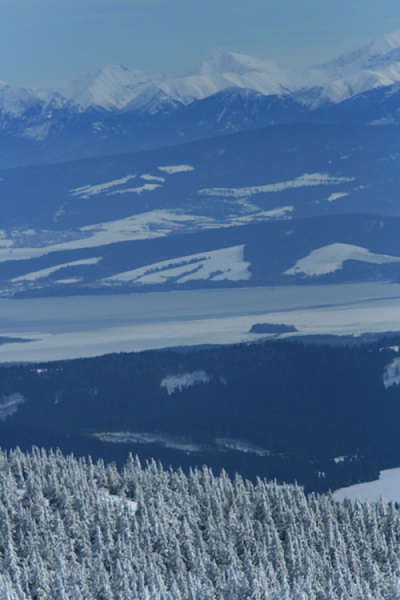Habitat reguirements
Due to intensive hunting and urbanization, which caused habitat fragmentation and decrease in availability of forest habitats, the wolf range in Europe suffered a dramatic decline over the last few centuries. The gray wolf mainly inhabits the areas characterized by high forest coverage (over 40%) – the areas of dense forests of low fragmentation degree. Wolves live in various types of forests: from deciduous to coniferous monocultures.
 The studies carried out in the Białowieża National Park did not show any preference towards concrete forest type (Jędrzejewska and Jędrzejewski 1998). In north-eastern Poland wolves often inhabited vast pine monocultures (Jędrzejewski et al. 2004). The data gathered in Poland indicate that the gray wolf is a fairly plastic species able to inhabit areas of various environmental conditions. The majority of wolf records comes from areas of high forest coverage reaching 50-80%. This preferences are most clearly visible in southern Poland (Jędrzejewski et al. 2005). In north-western Poland, however, wolves successfully inhabit areas of 11% forest coverage (Jędrzejewski et al. 2004). In north-eastern Poland wolves occur in vast wetlands that offer numerous refuges and are also difficult to access (Jędrzejewski et al. 2004). Proper food base availability is a significant factor determining wolf settlement in a certain area. It is estimated that to sustain a healthy, stable wolf population ungulates’ density in the area should reach 50kg biomass/1 km. Wolves deliberately avoid highly populated areas, those situated near large cities and agglomerations, as well as those with dense network of roads (over 0,2 km of national and voivodship roads / 1 km2).
The studies carried out in the Białowieża National Park did not show any preference towards concrete forest type (Jędrzejewska and Jędrzejewski 1998). In north-eastern Poland wolves often inhabited vast pine monocultures (Jędrzejewski et al. 2004). The data gathered in Poland indicate that the gray wolf is a fairly plastic species able to inhabit areas of various environmental conditions. The majority of wolf records comes from areas of high forest coverage reaching 50-80%. This preferences are most clearly visible in southern Poland (Jędrzejewski et al. 2005). In north-western Poland, however, wolves successfully inhabit areas of 11% forest coverage (Jędrzejewski et al. 2004). In north-eastern Poland wolves occur in vast wetlands that offer numerous refuges and are also difficult to access (Jędrzejewski et al. 2004). Proper food base availability is a significant factor determining wolf settlement in a certain area. It is estimated that to sustain a healthy, stable wolf population ungulates’ density in the area should reach 50kg biomass/1 km. Wolves deliberately avoid highly populated areas, those situated near large cities and agglomerations, as well as those with dense network of roads (over 0,2 km of national and voivodship roads / 1 km2).







